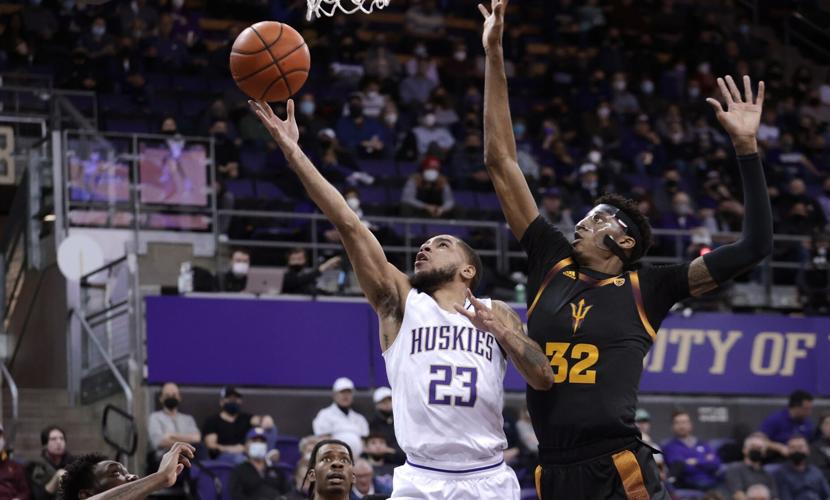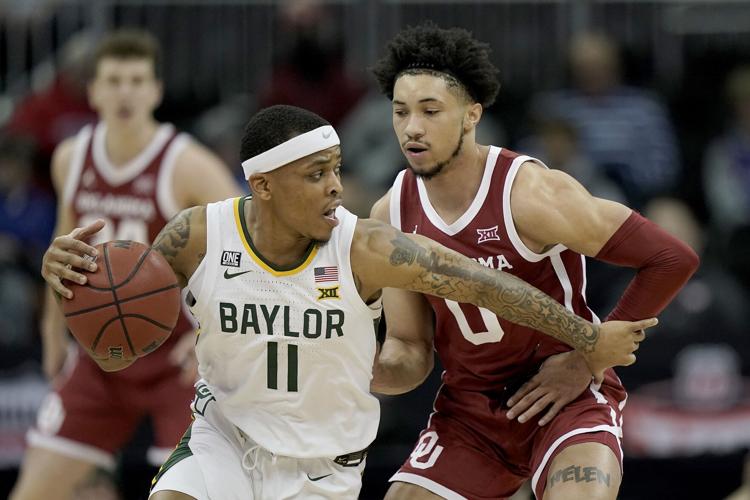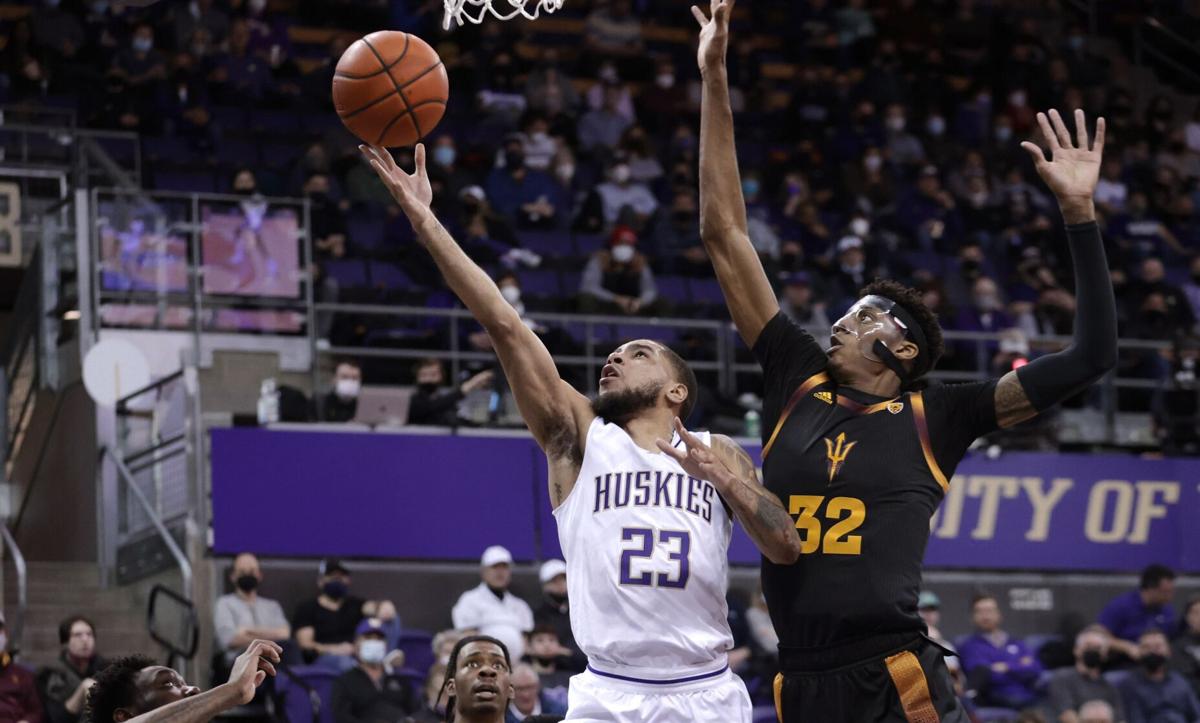College basketball’s transfer portal is mostly fool’s gold.
It’s Terrell Brown averaging 7.3 points at Arizona and 21.7 at Washington, abandoning an Arizona team that would go 33-4 to be The Man on a UW team that went 17-15.
It is the search for more shots, a yearning to be more appreciated, an attempt to alert NBA scouts to a hidden talent and to become, at last, the Go-To Guy destined for a life-changing NBA contract.
Brown is now a sub for the G League Memphis Hustle.
It’s Courtney Ramey, believing the Texas Longhorns had not fully tapped into his skills — where he averaged as many as 12.2 points per game — transferring to Arizona as a fifth-year player, averaging 10.5, the third and sometimes fourth option in Tommy Lloyd’s offense.
And now the team he left, Texas, is a No. 2 seed in the Sweet 16.
Now comes UA point guard Kerr Kriisa, who joins more than 700 Division I players to enter the transfer portal in the last two weeks, many looking for more points and more love.
Kriisa led the Pac-12 in assists this year, but it must be said that in the last 15 years an all-but-anonymous group of point guards named Derek Glasser, Dashawn Davis, Mitch Johnson and Reggie Moore also led the Pac-12 in assists.
None made the all-conference team.
This isn’t to bag on Kriisa. He played hard. He might’ve hit his ceiling at Arizona. But he was not Jason Terry or Jason Gardner or anyone who contributed to the sainted history of point guards at Point Guard U.
The last five seasons have seen an accelerated exodus of Wildcats bolt for so-called better opportunities elsewhere: James Akinjo, Jordan Brown, Emmanuel Akot, Devonaire Doutrive, Kobi Simmons, Brandon Randolph, Alex Barcello, Jemarl Baker.
Do not expect the trend to change.

Former Arizona point guard James Akinjo is an example of the transient nature of college basketball. He spent two seasons at Georgetown, one at the UA and 2021-22 at Baylor.
Like many (most?) Division I schools, Arizona has often replaced transfers with transfers rather than freshmen. In recent years, the UA has been the home to one-year players Brown, Akinjo, Ramey, Cedric Henderson, Justin Kier, Mark Tollefsen, Ryan Luther, Stone Gettings, Max Hazzard and on and on.
That’s modern college basketball. There is little patience. There are few and fewer four-year players like UCLA’s Tyger Campbell and Gonzaga’s Drew Timme, rivals who find themselves matched against each other in the Sweet 16.
Goodbye Kerr Kriisa, hello Kylan Boswell, who for a day or two has no competition to be Arizona’s starting point guard in 2023-24.
That will soon change. According to several websites who make a living tracking transfers, Arizona has already made contact with two of the first point guards to enter the 2023 transfer portal: Cal Baptist freshman Taran Armstrong, who averaged 11.3 points, and Lamar’s Nate Calmese, a freshman from Gilbert Mesquite High School who led his club with a 17.6 average.
Lamar? Cal Baptist? It’s a reflection on the depth of today’s college basketball as opposed to, say, 1995 and 2005. If you doubt that, check the Sweet 16 field that includes Princeton and Florida Atlantic.
Basketball’s transfer portal is mostly the way to plug a hole for a year or two. Temper your expectations. There are few examples to compare to college football‘s transfer portal, where star quarterbacks like USC’s Caleb Williams, Oregon’s Bo Nix, Washington’s Michael Penix and Arizona’s Jayden de Laura became immediate difference-makers.
The Oregon Ducks brought in volume-shooting guards Quincy Guerrier of Syracuse and Jermaine Couisnard of South Carolina, but neither improved their production. Guerrier averaged 13.7 points as a sophomore at Syracuse and 9.0 as a senior at Oregon. Couisnard averaged 11.6 in three years at South Carolina and 12.8 in one at Oregon.
No wonder the Ducks lost 15 games and drew just 3,384 fans for a home NIT loss to Wisconsin on Tuesday. The transfer portal doesn’t often pay off with championship rings. Exceptions? A year ago, ASU’s all-conference guard, Remy Martin, left Tempe to play his final year at a big-stage school, Kansas.
The difference was that Martin had to temper his personal goals to play for what became the 2022 national champion. He went from 33 minutes a game at ASU to 21 at Kansas. His scoring average fell from 19.1 to 8.6.
He left with a smile on his face.
The best way for the transfer portal to work is to trade up, to play for a better team, be part of something special instead of a getting more shots — empty numbers — at a middlin’ school.

T.J. McConnell didn't put up eye-popping numbers after transferring from Duquesne to Arizona. But he thrived against better competition, and he's making millions with the Indiana Pacers in the NBA.
There are few better examples of modern transfer success than that of T.J. McConnell, who was an All-Atlantic 10 point guard at Duquesne in 2012, averaging 11.4 points. Because of a family link to Arizona coach Sean Miller dating back to Miller’s early days in Pennsylvania, McConnell chose to transfer to Arizona.
McConnell wasn’t leaving to get more love. He was leaving Duquesne in an attempt to get better by playing better competition.
McConnell sat out a year and in 2014 and 2015 led the Wildcats to two Elite Eights and to records of 33-5 and 34-4. His numbers were modest: 8.4 and 10.4 points per game. But on Senior Day at McKale Center 2015, McConnell took a knee at center court and kissed the A.
While many are chasing fool’s gold, McConnell is being paid $8.1 million by the Indiana Pacers, a contract that runs through 2025 and will put his career earnings at $45 million.
McConnell doesn’t have great stats, but his career has been pure gold.
Only two No. 1 seeds remain after the first two rounds of the NCAA Tournament, while No. 15 Princeton and No. 9 Florida Atlantic are also still alive.







